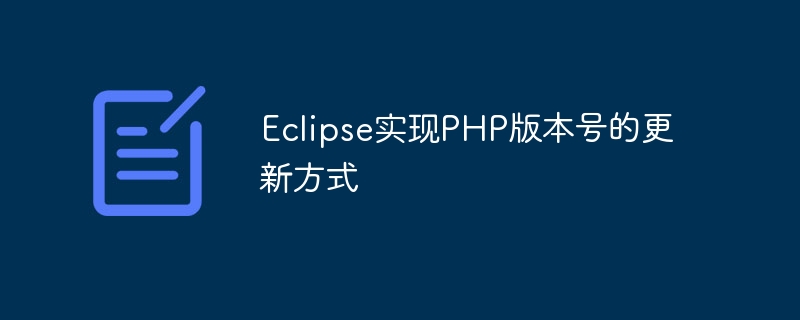

Title: How Eclipse implements PHP version number update
As the project continues to develop, code version management becomes crucial. In the development process of PHP projects, updating the version number is also an essential part. This article will introduce how to update the PHP version number through Eclipse IDE and provide specific code examples.
To implement the update method of PHP version number in Eclipse, you can use version control tools such as Git or SVN to manage the version information of the code. Update the version number by adding version number comments in the code or using version management tools.
First of all, we can create a new version number file (version.php) in the root directory of the PHP project to store the version number information. Its content is as follows:
<?php
define('VERSION', '1.0.0');
?>Use the VERSION constant in the code to represent the current version number. When you need to update the version number, you only need to modify the version number in version.php.
In addition, we can also manage version number updates through Git. Before submitting the code, you can use Git's tag function to mark different versions of the code. The specific operations are as follows:
git add . git commit -m "Commit message here" git tag -a v1.0.1 -m "Version 1.0.1" git push origin master --tags
Through the above method, you can easily update the PHP version number and view historical version information. In team collaboration development, version number management can effectively improve development efficiency and collaboration quality.
In short, through Eclipse combined with version control tools such as Git or SVN, you can easily update the PHP version number. Whether through constants or through version control tools, the version information of the code can be well managed and tracked. I hope the methods provided in this article can help developers better manage version number updates in PHP projects.
The above is the detailed content of How Eclipse implements PHP version number update. For more information, please follow other related articles on the PHP Chinese website!